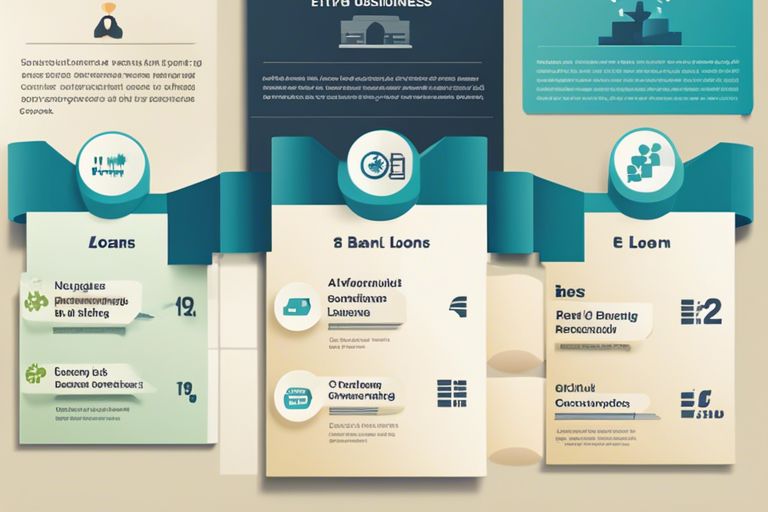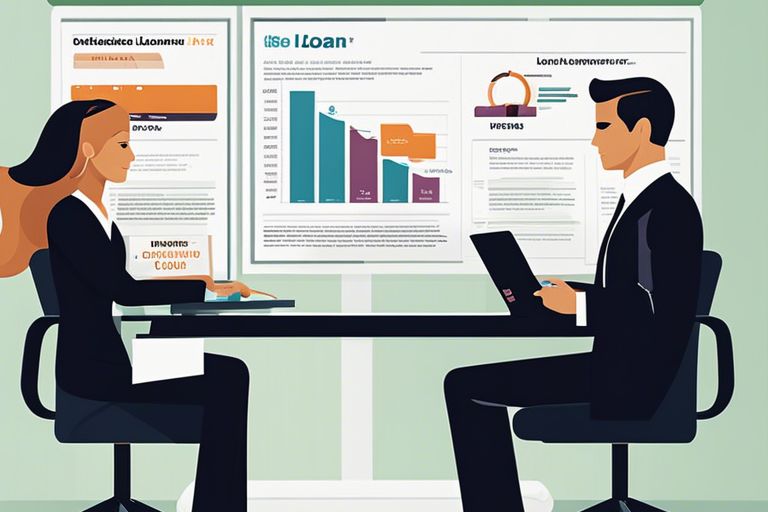business loans how much can i borrow For any entrepreneur aiming to expand, grasping the complexities of business loans is crucial. The query often on their minds is, “business loans how much can I borrow?” Recent data from the Federal Reserve indicates the average small business loan is about $663,000. Lenders can offer loans from $5,000 to over $1.5 million, influenced by my financial background and the lender type. Understanding how to calculate my borrowing capacity for business financing is key to making informed decisions for growth or emergencies.
Exploring this topic reveals the importance of comprehending loan specifics. Whether it’s short-term loans with a 3-month repayment or long-term loans over 5 years, grasping the full spectrum of financing options is essential. This knowledge aids in making well-informed financial decisions.
Table of Contents
Key Takeaways
- Loan amounts can range from $5,000 to $1.5 million, depending on various factors.
- The average small business loan amount is around $663,000.
- Loan terms usually vary from 3 months to 5 years.
- Minimum credit score requirements typically range from 501 to 660.
- Funding times after loan approval can range from the same day to within 1-3 business days.
- Understanding my borrowing capacity is crucial for financial planning.
- Different lenders have varying approval processes and loan amounts.
Understanding Business Loans
For entrepreneurs, grasping the concept of business loans is vital for effective financing. These loans are pivotal for various needs, such as buying equipment, covering operational costs, or driving growth. It’s crucial to understand the different types of loans to make informed decisions.
Business loans come in diverse amounts and terms, affecting their suitability for my financial plans. The average small business loan is about $663,000. Yet, this figure varies significantly with credit scores and financial histories. Large national banks typically lend around $593,000, whereas smaller regional banks offer about $146,000.
For those exploring specific loan types, the SBA 7(a) loans average $479,685. In contrast, 504 loans can go up to $1.08 million. Knowing these differences helps me choose the right loan for my business.
Online loans offer flexibility, ranging from $5,000 to $500,000, ideal for short-term financing needs. Business lines of credit can reach up to $1 million, aiding in managing cash flow variations. Each option has distinct benefits that require thorough evaluation for effective financing.
Understanding business loans empowers me to make strategic financial decisions. By comprehending the various loan types, I can adeptly navigate the complex financial landscape.
Types of Business Loans
Exploring financing options requires understanding the various types of business loans available. Each type addresses specific financial needs and situations. I can select from term loans, business lines of credit, SBA loans, and alternative lending options, depending on my financial requirements.
Term Loans
Term loans offer a single lump sum that I repay over a specified period, usually one to five years. To apply, I typically need six months of operational history. Banks often require a credit score between 690 and 719 and a business history of two years.
Business Lines of Credit
Business lines of credit work like a credit card, allowing me to borrow funds as needed up to a set limit. They are ideal for managing cash flow and covering unexpected expenses. This option is particularly beneficial for businesses with seasonal fluctuations.
SBA Loans
SBA loans, backed by the Small Business Administration, provide low interest rates and large loan amounts, up to $5.5 million. They offer repayment terms that can extend up to 25 years. These loans are suitable for businesses that struggle to qualify for traditional loans.
Alternative Lending Options
For businesses needing quick funding, alternative lending options are available. These include equipment loans, invoice factoring, merchant cash advances, and personal loans for business purposes. Each option has distinct eligibility criteria and interest rates. Equipment loans are simpler to obtain, using the equipment as collateral. Invoice factoring offers immediate cash for unpaid invoices but can be more costly.

| Loan Type | Purpose | Loan Amounts | Repayment Terms | Eligibility |
|---|---|---|---|---|
| Term Loans | Expanding business | $1,000 – $5 Million | 1 – 5 years | 2 years in business, credit score 690-719 |
| Business Lines of Credit | Cash flow management | Flexible limit based on lender | Revolving credit | Variable, often stricter criteria |
| SBA Loans | Long-term financing | $500 – $5.5 Million | Up to 25 years | Must meet SBA criteria |
| Alternative Lending Options | Quick access to funds | $1,000 – $50,000 | Varies | Varies by lender |
Average Business Loan Amounts
Exploring the world of business loans reveals the importance of understanding average loan amounts across different financing types. These amounts vary significantly, depending on the lender and the loan’s purpose.
Statistics on Loan Amounts
Recent statistics highlight the borrowing habits of small businesses. The Federal Reserve reports an average small business loan of about $663,000. This figure indicates the financial support needed for growth. In 2022, the average SBA 7(a) loan hit $999,210, showing the potential for substantial funding through this program.
The percentage of small businesses applying for loans has decreased, from 43% in 2019 to 34% in 2021. Only 31% of these businesses received all requested funds, down from 51% in 2019. This decline might reflect changes in the lending climate and stricter lender scrutiny. https://pin-code-s.com/
Comparison of Loan Types
Comparing loan types reveals the diverse funding options available. Traditional banks generally offer larger loans than alternative lenders. For instance, national banks average about $593,000, while online lenders provide loans from $5,000 to $500,000. These figures highlight the varied support levels from different lending models for small businesses.
| Loan Type | Average Loan Amount |
|---|---|
| SBA 7(a) Loans | $999,210 |
| SBA 504 Loans | $972,506 |
| Average Traditional Bank Loans | $593,000 |
| Online Lenders | $5,000 – $500,000 |
| Average SBA Microloan | $13,000 |

This comparison of loan amounts underscores the significance of selecting the right funding source for a business’s specific needs. By examining average loan amounts, we gain insight into how different loan types meet various financial goals. These statistics are crucial for understanding the landscape of business financing.
Factors Affecting Loan Amounts
When I apply for a business loan, various factors affecting loan amounts come into play. These factors significantly impact the amount I can borrow and the terms I receive.
My loan eligibility depends on several key considerations:
- Credit Score: A higher credit score indicates reliability to lenders, potentially leading to larger loan offers.
- Financial History: A solid financial background, including consistent revenue and timely repayment of previous loans, benefits me.
- Time in Business: Established businesses have more leverage when negotiating loan amounts than newer ventures.
- Type of Business Credit: The type of credit I apply for, such as a term loan, line of credit, or alternative financing, affects potential loan amounts.
For example, business term loans at Funding Circle can range from $25,000 to $500,000. This shows how lenders evaluate business credit to reduce risk. I find it helpful that Funding Circle assigns me an Account Manager to guide me, improving my understanding and confidence.

Business Loan Eligibility Calculator
For any entrepreneur, mastering the use of a business loan eligibility calculator is crucial. This tool helps me determine my borrowing capacity by analyzing my financial information and loan specifics. By entering details like the loan amount, repayment term, and interest rate, I can see how my finances stack up and what I might qualify for.
How to Use a Calculator
To accurately estimate my borrowing potential, I follow these steps with the calculator:
- Enter the desired loan amount.
- Specify the repayment term of the loan.
- Input the expected interest rate.
- Review the calculated borrowing capacity based on the entered data.
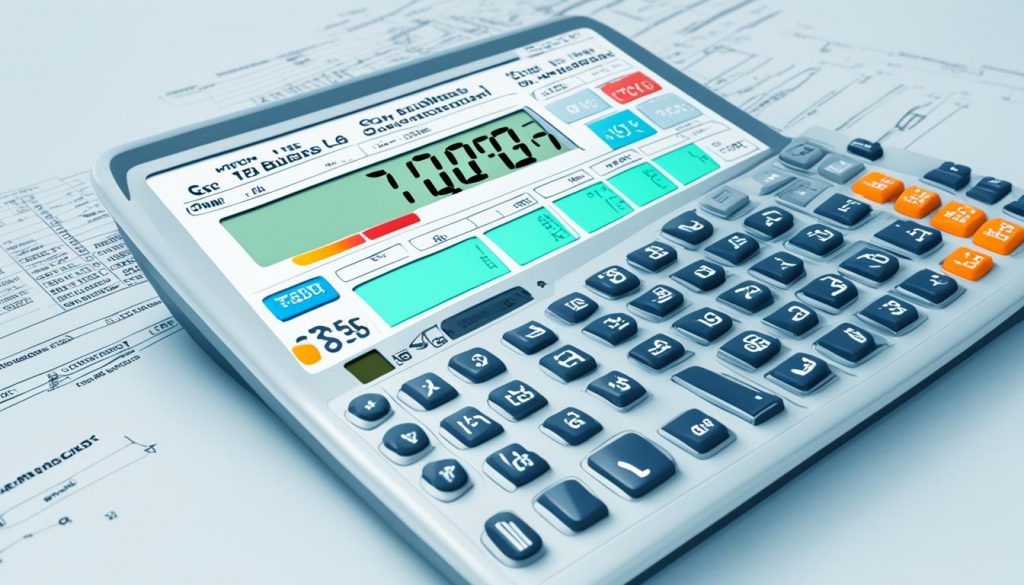
Key Metrics to Consider
When using the calculator, I concentrate on key metrics lenders look at:
- Debt Service Coverage Ratio (DSCR): This ratio shows if I can afford to pay off my debts with my business’s earnings.
- Debt-to-Income (DTI) Ratio: This compares my total monthly debt payments to my gross monthly income, reflecting my financial health.
- Business Revenue and Profitability: Assessing my business’s earnings is crucial to demonstrate its stability to lenders.
- Time in Business: Lenders often favor businesses with a solid history.
Understanding these metrics helps me make better financing choices.
Determining Loan Affordability
Assessing my ability to manage loan payments requires a thorough review of my financial situation. I must scrutinize my loan budget to ensure it doesn’t compromise my business operations. Utilizing a business loan calculator helps me estimate monthly payments across various loan amounts and terms.
Understanding loan affordability is crucial. I need to grasp the full scope of business loan costs, including interest rates, fees, and penalties. This knowledge aids in crafting a budget that covers my expenses and loan repayments realistically.
When setting my loan budget, I consider different loan types:
- Term loans with set repayment schedules
- Lines of credit for flexible access to funds
- Equipment financing for purchasing machinery
- SBA loans that often offer lower rates and favorable terms
- Merchant cash advances or invoice factoring as alternative options

Calculating loan affordability also means accounting for cash flow fluctuations. A contingency plan ensures I can fulfill loan obligations during tough times. By prioritizing my needs and understanding my financial situation, I can make well-informed borrowing decisions.
| Loan Type | Typical Loan Amounts | Average Interest Rates | Term Length |
|---|---|---|---|
| Term Loans | $500 to $500,000+ | 3% – 11% | 1 – 10 years |
| Lines of Credit | $1,000 to $250,000 | 7% – 30% | Up to 5 years |
| SBA Loans | $500 to $5 million | 3.52% – 16.5% | 10 – 25 years |
| Equipment Financing | $1,000 to $1 million | 4% – 20% | 1 – 25 years |
For my business’s health, maintaining balanced cash flow is key. By diligently tracking expenses and expected business loan costs, I can confidently decide on borrowing.
Factors Lenders Consider When Determining Amounts
For any business owner seeking financing, it’s crucial to grasp the factors lenders weigh when deciding on loan amounts. Several key criteria are pivotal in assessing my eligibility and borrowing capacity.
Credit Score Requirements
Lenders primarily focus on my credit score. A minimum score of 680 is often required for beneficial loan terms. Credit scores from Dun & Bradstreet, such as the D&B Delinquency Predictor Score and the D&B Small Business Financial Exchange (SBFE) Score, are crucial. They are used by lenders like Bank of America in their decision-making process.
Business Revenue and Profitability
My business’s revenue and profitability are also crucial to lenders. Consistent revenue proves my capability to repay the loan, a key factor in their evaluation. Higher profitability often leads to more favorable lending terms and larger potential borrowing amounts.
Time in Business
The length of time my business has been in operation significantly impacts lenders’ decisions. A longer history typically signals stability and reliability, providing lenders with confidence in my financial management.
Debt Service Coverage Ratio (DSCR)
Lenders also scrutinize the DSCR. This ratio reveals how well my earnings can cover debt obligations. A DSCR of 1.25 or higher is generally preferred, indicating a robust capacity to fulfill financial duties.
Debt-to-Income (DTI) Ratio
The DTI ratio assesses my overall debt against my income. Lenders typically look for a DTI of 36% or less. However, some government-sponsored loans may consider ratios up to 50%. A lower DTI ratio significantly improves my attractiveness to potential lenders.
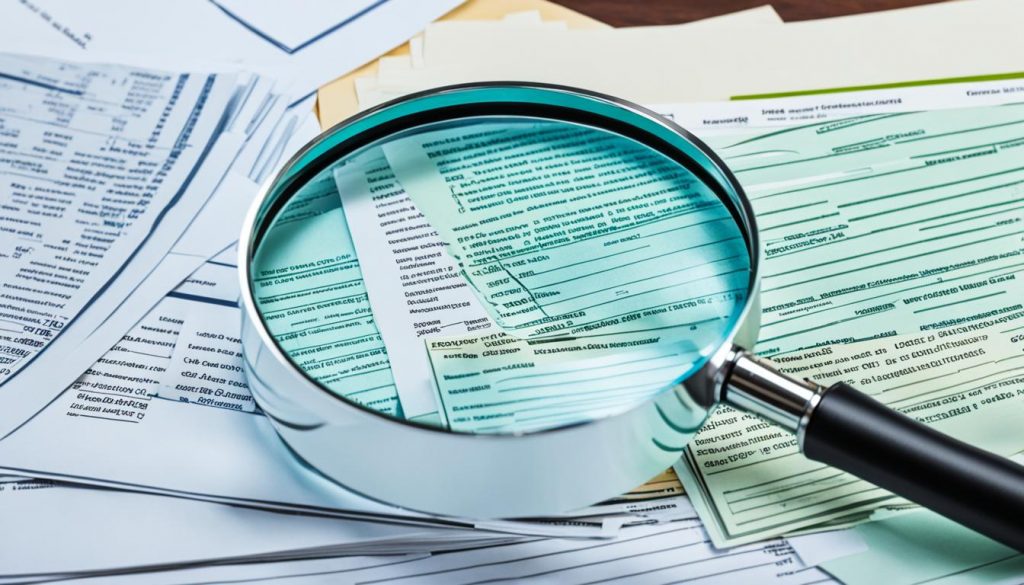
| Factor | Ideal Threshold |
|---|---|
| Credit Score | 680 or higher |
| DSCR | 1.25 or higher |
| DTI | 36% or lower (up to 50% for certain loans) |
| Time in Business | More than 2 years preferred |
Business Loans How much can I Borrow
Understanding business loans how much can I borrow is crucial for entrepreneurs seeking financing. My borrowing potential hinges on my credit score, business revenue, and the lender I select. Lenders set specific loan limits, which can affect how much I can borrow. For example, OnDeck offers loans between $5,000 and $250,000, requiring a minimum credit score of 625.
National Funding also offers loans from $10,000 to $500,000 with competitive APRs. Unlike traditional banks, where business loan rates range from 3% to 11%, online lenders like American Express Business Blueprint™ may have varying APRs. These differences can significantly impact my borrowing potential based on my business’s financial health.
Early-stage businesses may find SBA loans appealing, offering amounts up to $5 million. This type of financing can significantly boost my business, highlighting the importance of evaluating different loan options thoroughly.

With diligent research and a deep understanding, I can effectively navigate the funding landscape. Building a strong financial foundation and comprehending loan limits will improve my ability to secure the most fitting loan for my business needs.
Maximum Loan Amounts for Businesses
Understanding the maximum loan amounts for businesses is crucial when exploring financing options. These limits vary widely based on the lender and the loan type. For example, SBA 7(a) loans can go up to $5 million, offering substantial funding for various needs. On the other hand, the SBA Express loan caps at $350,000, providing a quicker, albeit smaller, funding option.
The CDC/504 loans offer even more substantial funding, with a maximum of $14 million, enabling borrowing up to $20 million for multiple projects. Community Advantage loans provide smaller amounts, typically between $50,000 and $250,000. The SBA Microloan program targets those needing up to $50,000 in assistance.
The average commercial and industrial loan from banks is about $663,000, according to recent figures. Business credit cards offer flexible limits, depending on spending habits and repayment capacity, with some having no set maximum. Online business lines of credit allow borrowing from $2,000 to $250,000, offering a versatile financing option.
Below is a table outlining various loan types and their corresponding maximum loan amounts:
| Loan Type | Maximum Loan Amount |
|---|---|
| SBA 7(a) Loans | $5,000,000 |
| SBA Express Loans | $350,000 |
| CDC/504 Loans | $14,000,000 (up to $20 million for multiple projects) |
| Community Advantage Loans | $50,000 – $250,000 |
| SBA Microloan Program | Up to $50,000 |
| Average Commercial and Industrial Loan | $663,000 |
| Online Term Loans | $1,000 – $500,000 (exceeding $6 million possible) |
| Online Business Lines of Credit | $2,000 – $250,000 |
Understanding business financing limits is key to making informed decisions about the best financial solutions for my needs.
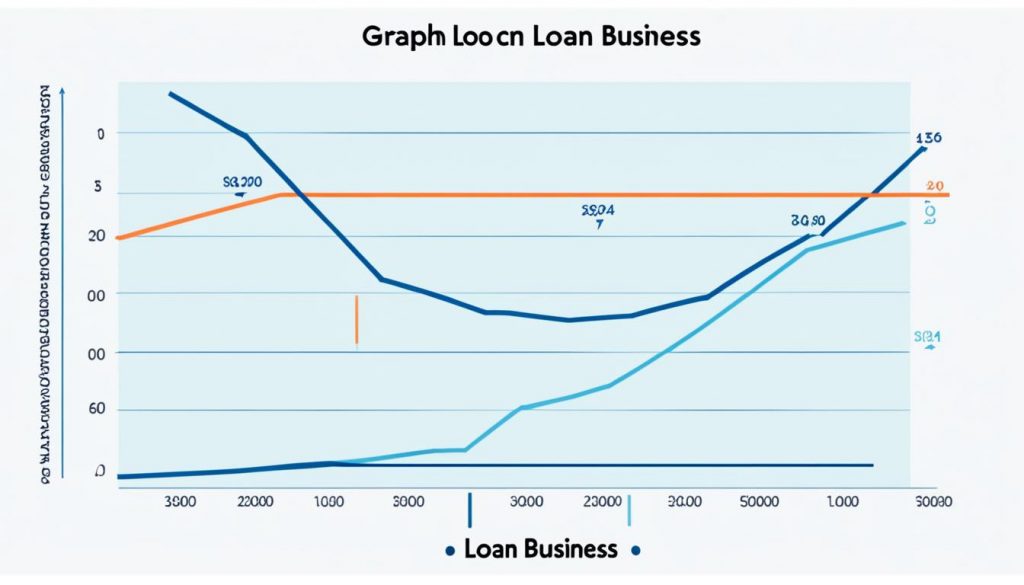
Calculating Borrowing Capacity for Business Financing
Understanding my borrowing capacity is vital for business financing. I assess my income, debts, and future revenue to determine my loan affordability. These factors are key to figuring out what I can borrow.
Financial ratios provide insight into my borrowing potential. The Debt-Service Coverage Ratio (DSCR) is crucial. It’s the net operating income divided by debt obligations. Lenders want a DSCR of at least 1.25 to ensure my business can cover its debts.

If my business has a DSCR of 1.73, it means I’m earning 73% more than I spend. This shows strong financial health, boosting my loan approval chances. Freelancers face unique challenges, making high credit scores and detailed records essential.
When calculating borrowing capacity, I also look at loan amounts and interest rates. Commercial banks offered about $663,000 on average in 2017. Yet, alternative lenders like Lendio provide loans around $26,873. Knowing these figures helps me plan my funding strategy.
| Lender Type | Average Loan Size | Typical Interest Rate |
|---|---|---|
| Commercial Banks | $663,000 | 5% – mid-20% |
| Alternative Lenders | $26,873 | 7% – 36% |
To fully understand my borrowing capacity, I must consider my finances, loan options, and business goals. Tools like business loan calculators help me explore different scenarios. This way, I can better grasp what I can afford and make informed financing decisions.
Preparing Your Business for a Loan Application
Preparing for a loan application demands meticulous planning and meticulous organization. A structured approach can boost my approval chances and streamline the process. The initial step involves gathering essential documentation. This is followed by efforts to build business credit, which crucially impacts loan terms.
Gather Necessary Documentation
For loan application preparation, I must compile the following documents:
- Business Plan: This outlines my business goals, strategies, and operational plans.
- Tax Returns: I should include several years of personal and business tax returns to establish my financial background.
- Financial Statements: This includes balance sheets, cash flow statements, and income statements to provide an overview of my business’s financial health.
- Proof of Revenue: This could be invoices, bank statements, or accounting software reports that validate my income.
- Legal Documents: These may consist of business licenses, registrations, and any contracts relevant to my operations.
Establish Business Credit
Establishing business credit is vital, as a strong credit score can lead to more favorable loan terms. I can begin by:
- Opening a Business Credit Card: This helps in building my credit history and demonstrates responsible borrowing behavior.
- Paying Off Balances: Timely payments on all debts will positively affect my business credit score.
- Monitoring My Credit Report: Regular checks enable me to stay informed about my credit standing and rectify any discrepancies.
- Utilizing Credit Wisely: Keeping my credit utilization low ensures that I maintain a good credit score.

Securing Funding for Business Expansion
Securing funding for business expansion demands a thorough examination of financing options. The Small Business Administration (SBA) is pivotal in aiding small businesses by establishing loan guidelines and reducing lender risks. SBA-guaranteed loans span from $500 to $5.5 million, catering to a wide range of business needs.
Exploring various loan purposes is crucial when evaluating funding options. Long-term assets, operational capital, and seasonal financing are potential avenues. The SBA’s offerings, including lower down payments and flexible overhead requirements, can be game-changers. These benefits can greatly enhance my funding prospects.
Creating a robust business case is essential. It should highlight market potential and revenue forecasts. The SBA’s 7(a) loan and microloan programs offer tailored support for different business scenarios. Microloans are ideal for small improvements, while the 7(a) loan supports a broader range of financing needs with extended support.
Here’s a summary of key loan options available through the SBA:
| Loan Type | Amount Range | Min Years in Business | Min Annual Revenue |
|---|---|---|---|
| SBA 7(a) Loan | $500 to $5.5 million | Varies (typically 2 years) | $100,000 |
| Microloan | Up to $50,000 | Varies | Not specified |
| Equipment Loan | Up to $500,000 | 2 years | $250,000 |
| Commercial Real Estate Loan | Varies | 2 years | $250,000 |
Understanding terms and eligibility criteria is key to securing funding. Loans may require monthly or more frequent payments. Interest rates, ranging from 2.81% to 13%, depend on the loan type and terms. Mastering these funding channels can significantly aid my business expansion goals.

Loan Repayment Terms for Business Owners
The repayment terms for business loans are crucial for financial planning. They help me select the right financing options that fit my cash flow and goals. The choice between short-term and long-term loans affects not only the payment duration but also the total borrowing cost.
Short-Term vs. Long-Term Loans
Short-term loans have repayment periods under two years, ideal for urgent financing needs. However, they often come with higher interest rates, increasing the total cost over time. In contrast, long-term loans can stretch up to 25 years, offering lower monthly payments but potentially higher total interest. Here’s a detailed comparison:
| Loan Type | Average Loan Term | Maximum Loan Amount | Typical Interest Rate |
|---|---|---|---|
| Short-Term Loans | Less than 2 years | Up to $250,000 | 6% to 36% |
| Long-Term Loans | Up to 25 years | Up to $5 million | 7% to 15% |
Understanding Interest Rates
Grasping interest rates is key for business owners. These rates influence monthly payments and the loan’s total cost. Traditional bank loans offer rates from 3% to 22%, while SBA loans average base rates plus an additional percentage. It’s crucial to compare these to make informed financing decisions.
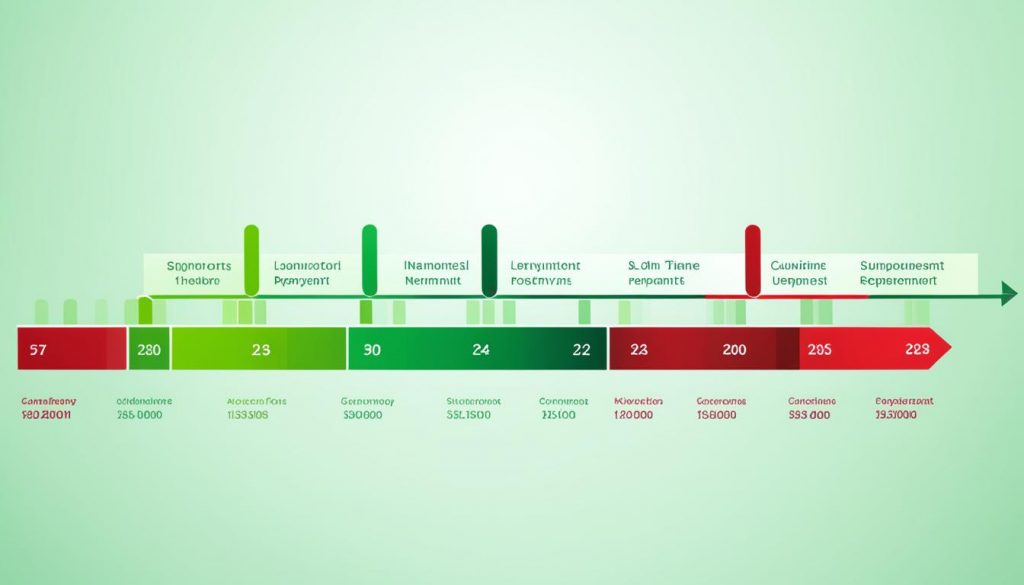
Managing Your Loan Repayments
Effectively managing loan repayments is crucial for my business’s financial health. A structured payment plan helps me prioritize timely payments, avoiding late fees and penalties that could damage my credit rating.
Using various repayment strategies ensures I fulfill my loan commitments. Automatic payments reduce the chance of missing due dates. A reserve fund for unexpected expenses provides a safety net, helping me manage financial fluctuations.
Regular financial reviews offer insights into my cash flow and profitability. Understanding metrics like the debt service coverage ratio (DSCR) helps determine my debt capacity. It’s vital to consider interest rates and fees when evaluating loan affordability. Business loans typically range from $25,000 to $500,000, with repayment periods from six months to five years.

Assessing repayment strategies must account for potential risks, like overextending my loan capacity. Business owners should consider best and worst-case scenarios for loan utilization. Interest rates vary, with Funding Circle starting at 7.49%, and APR rates at 8.75%. These factors influence the total borrowing cost, beyond the loan amount.
| Loan Type | Amount Range | Repayment Period | Starting Interest Rate | Fees |
|---|---|---|---|---|
| Funding Circle | $25,000 – $500,000 | 6 months – 5 years | 7.49% | 4.49% – 10.49% origination fee |
| Average Business Loans | $25,000 – $500,000 | 6 months – 5 years | Variable or Fixed | Late payment fees: 5% |
In conclusion, sound financial management is key to navigating loan repayments. Continuously learning about effective repayment strategies and financial projections helps me meet my obligations and support growth.
Common Challenges in Borrowing
Securing a business loan often comes with numerous hurdles that can be overwhelming. One significant challenge is the strict criteria set by lenders. By 2020, around 80% of small business owners faced loan denials from banks. This high rejection rate stems from limited business credit history, making it hard to prove creditworthiness.
Lenders delve into both personal and business credit reports, examining credit lines and payment histories. If my personal credit score is poor, getting a small business loan becomes harder. Moreover, loans often require collateral, which new entrepreneurs may have to use personal assets like a home or vehicle for approval.

Another issue is the diverse revenue requirements among lenders. Despite small banks approving around 49% of applications, many still face rejection. Online and traditional lenders evaluate revenue differently, adding to the complexity. It’s vital to understand these business loan hurdles for those seeking funding.
The consequences of not securing funding are dire, with 29% of small businesses failing due to lack of capital. With only 48% meeting their financing needs, heavily relying on loans, overcoming these challenges is crucial. In essence, preparing thoroughly and understanding my financial situation is key to making informed decisions.
Conclusion
The journey to secure conclusion business loans requires a deep dive into the financing options available. With 93 percent of businesses facing financial hurdles, it’s vital to explore various loan types. Options like SBA loans or business lines of credit can help determine how much I can borrow effectively. Each loan type comes with different maximum amounts and interest rates, affecting my repayment strategy.
When considering borrowing, preparation and knowledge are key. Using a business loan eligibility calculator and preparing essential documents boosts my chances of getting the right loan for growth. It’s also crucial to understand repayment terms, which can span from six months to 25 years. This knowledge is vital for maintaining my business’s financial health and sustainability.
Understanding my borrowing capacity and what lenders consider when evaluating loan amounts is crucial. With the right strategy and information, I can effectively navigate financial challenges. This approach will help me secure funding and ensure my business’s future growth.
FAQ
How much can I borrow with a business loan?
How much can I borrow with a business loan?
FAQ
How much can I borrow with a business loan?
The borrowing capacity for a business loan varies widely, typically ranging from
FAQ
How much can I borrow with a business loan?
The borrowing capacity for a business loan varies widely, typically ranging from $1,000 to over $5 million. It depends on my financial profile, credit score, revenue, and the loan type I apply for.
What is the average small business loan amount?
Recent data from the Federal Reserve shows the average small business loan amount is about $663,000. However, this can vary based on the lender and loan type.
How can I calculate my borrowing capacity for business financing?
To calculate my borrowing capacity, I assess my income, existing debts, and future revenue projections. Financial ratios like my debt service coverage ratio (DSCR) and debt-to-income (DTI) ratio help determine my eligibility.
What factors affect how much I can borrow?
Factors impacting my loan eligibility include my credit score, financial history, business revenue, time in business, and the loan type I pursue.
Is there a business loan eligibility calculator I can use?
Yes, a business loan eligibility calculator can help estimate my borrowing capacity. By inputting my desired loan amount, repayment term, and interest rate, it provides insights into my DSCR and DTI ratio.
What should I consider when determining loan affordability?
When determining loan affordability, I should analyze my monthly budget to ensure repayments fit comfortably within my financial means. It’s crucial to calculate my estimated monthly payments and maintain a balanced cash flow for other expenses.
What do lenders consider when determining how much I can borrow?
Lenders consider my credit score, business revenue and profitability, time in business, DSCR, and DTI ratio to assess my repayment ability.
What are the maximum loan amounts available for businesses?
Maximum loan amounts vary by lender and loan type. For example, SBA 504 loans can provide up to $5.5 million, while business credit cards offer flexibility without a fixed maximum.
How can I prepare for a business loan application?
To prepare, I should gather necessary documentation like my business plan, tax returns, and financial statements. Establishing a solid business credit score is also crucial for securing favorable loan terms.
What types of loans are available for business expansion?
Financing options for business expansion include term loans for equipment purchases and lines of credit for operational expenses. A strong business case enhances my chances of securing the right funding.
What are the repayment terms for business loans?
Repayment terms for business loans vary significantly. Short-term loans usually have terms under two years, while long-term loans can extend up to 25 years. Understanding interest rates is key as they affect my monthly payments and overall loan costs.
What challenges may I face when seeking a business loan?
Common challenges include stringent lender requirements, high-interest rates, and complex loan terms. Overcoming these obstacles requires thorough preparation and a deep understanding of my financial landscape.
,000 to over million. It depends on my financial profile, credit score, revenue, and the loan type I apply for.
What is the average small business loan amount?
Recent data from the Federal Reserve shows the average small business loan amount is about 3,000. However, this can vary based on the lender and loan type.
How can I calculate my borrowing capacity for business financing?
To calculate my borrowing capacity, I assess my income, existing debts, and future revenue projections. Financial ratios like my debt service coverage ratio (DSCR) and debt-to-income (DTI) ratio help determine my eligibility.
What factors affect how much I can borrow?
Factors impacting my loan eligibility include my credit score, financial history, business revenue, time in business, and the loan type I pursue.
Is there a business loan eligibility calculator I can use?
Yes, a business loan eligibility calculator can help estimate my borrowing capacity. By inputting my desired loan amount, repayment term, and interest rate, it provides insights into my DSCR and DTI ratio.
What should I consider when determining loan affordability?
When determining loan affordability, I should analyze my monthly budget to ensure repayments fit comfortably within my financial means. It’s crucial to calculate my estimated monthly payments and maintain a balanced cash flow for other expenses.
What do lenders consider when determining how much I can borrow?
Lenders consider my credit score, business revenue and profitability, time in business, DSCR, and DTI ratio to assess my repayment ability.
What are the maximum loan amounts available for businesses?
Maximum loan amounts vary by lender and loan type. For example, SBA 504 loans can provide up to .5 million, while business credit cards offer flexibility without a fixed maximum.
How can I prepare for a business loan application?
To prepare, I should gather necessary documentation like my business plan, tax returns, and financial statements. Establishing a solid business credit score is also crucial for securing favorable loan terms.
What types of loans are available for business expansion?
Financing options for business expansion include term loans for equipment purchases and lines of credit for operational expenses. A strong business case enhances my chances of securing the right funding.
What are the repayment terms for business loans?
Repayment terms for business loans vary significantly. Short-term loans usually have terms under two years, while long-term loans can extend up to 25 years. Understanding interest rates is key as they affect my monthly payments and overall loan costs.
What challenges may I face when seeking a business loan?
Common challenges include stringent lender requirements, high-interest rates, and complex loan terms. Overcoming these obstacles requires thorough preparation and a deep understanding of my financial landscape.


